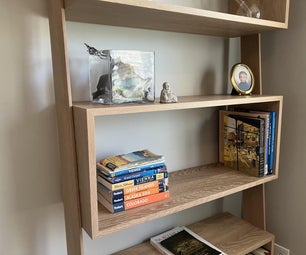Introduction: Hot Plastic Gun
This is a plastic extruder that's capable of extruding a lot of plastic. It's a work in progress.
here the entire Fusion360 file that has every component of this build.
Here's the current BOM
https://docs.google.com/spreadsheets/d/1JUMiHip88w...
Not included in the BOM are custom parts that you'll need to fabricate by CNC milling and 3D printing parts.
The basic idea is to take plastic pellets and melt it down and extrude it through a custom shaped die. In order to do this, I used a 1" wood auger driven by a stepper motor to push material forward and heat bands to heat the material. There is also a thermistor to measure the temperature and a PID to close the loop and turn the heat bands on and off as needed. At the tip of the extruder is a mist cooling system that uses compressed air to draw water to the tip and sprays a mist onto the hot plastic so it cools down quickly. To control the flow of plastic, there's a potentiometer, finger trigger, and foot pedal to accommodate different extruding styles.
The current design of the hopper holds approximately 1.5lb of plastic pellets. This could easily be extended with a 1" tube to a larger hopper hosted elsewhere.
Step 1: CNC Mill Shaft Collars and Spider Coupling Housing
These parts make the bulk of the custom parts needed for the extruder. Two extra-wide shaft collars for 1.125" OD tubing to hold the different tubes in place.
The spider coupling housing is used to hold one end of the tube agains the stepper motor while housing the spider coupling (which provides just enough slop to prevent the auger from jamming)
Almost all the components in this build are held together with M6 screws (for easy disassembly and reassembly)
Step 2: Mill Nozzle and Extruder Dies
The nozzle houses the thermistor and an interchangeable die. Lots of dies were made and tested, but in the end the two that were most reliable were the .125" and .5" rod extruding dies.
Step 3: Mill Slot in Pipe
The short aluminum pipe between the thermal break and the spider coupling housing needs a slot for the pellets to flow in.
Step 4: Trim Auger
Ideally we'd want to mill our own auger, but to keep things simple, you can use a 1" wood auger with a few modifications.
First, cut off the small screw at the tip of the auger. Then grid it down. You'll also probably need to run the auger on the lathe since the tip of the auger is usually not perfectly round and won't fit in a 1" ID tube.
The back end of the auger also needs some trimming. We are using the spider coupling to attach to the auger, so you can trim off the hexed area of the auger.
Step 5: Assemble Barrel
This is what the assembly of the custom parts with the tubing should look.
Step 6: Assemble Electronics and Test
The electronics for this build are pretty straight forward. The PID circuit + heat band + thermistor circuit is standard. To control the stepper motor controller, the momentary switches, stomp switch, and potentiometer, are connected to an arduino which then controlls the stepper controller.
Step 7: 3D Print Handle
The grip for the build is two 3D printed halves that get screwed together with M6 screws. Two toggle switches are housed inside to control forward and reverse motion of the auger.
Step 8: Assemble Gun
Here's the basic assembly. Were' still missing insulation around the heat bands (they get crazy hot) and the mist cooling system.
Step 9: Build Parts for Mist Cooling System
The cooling nozzle is made of 2 parts.
The white push-to-connect fitting draws compressed air through the tip, while the black fitting draws water. The smaller aluminum part fits over the black -push-to-connect fitting to decrease the nozzle diameter to 1mm, which is just enough water to break into a mist when it meets the compressed air at the tip.
Step 10: 3D Print Hopper
The hopper could be any size, but for this build, the black hopper was made to fit the maximum build volume of an Ultimaker2.
Step 11: Bend Metal Stand
This machine is heavy! You'll want somewhere to rest this thing. You can put it up-side-down and rest it on the hopper (it's design to stand up-side-down). But if you want to extrude hands-free, you'll want to build a stand. This stand is built out of 3/8" stainless steel and some simple bending using a vise.
Step 12: Extrude!
Ok all done! extrude!
Depending on your plastic you'll need to set your PID to run at the appropriate temperature.
Getting the right feed rates and temperatures takes a lot of practice!
Tips:
Polypropylene is the most forgiving plastic I could find.
Mist cooling blasts the area with a lot of pressure, thin extrusions can get pushed around. 1/2" round extrusions seem to hit the right balance of stiffness, extrusion speed, and cooling speed (if you're trying to get the plastic to cool fast enough to freeze midair).













